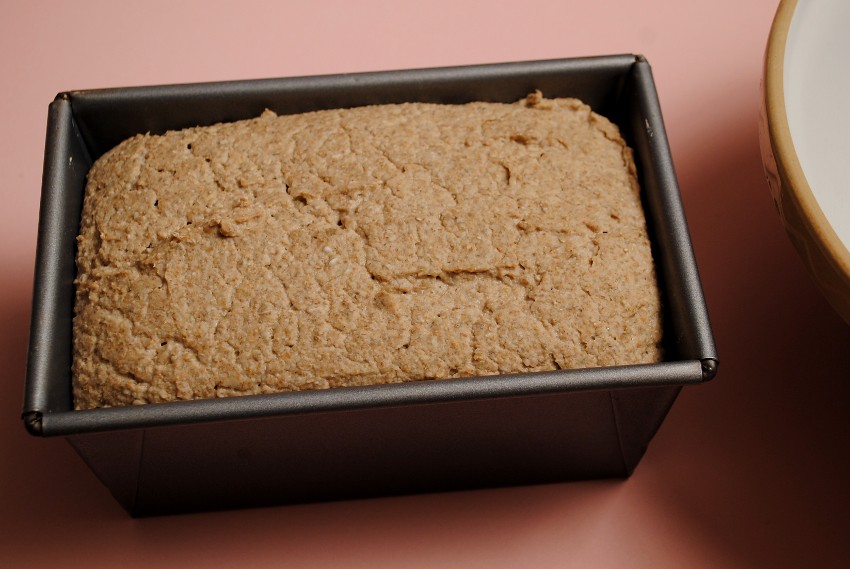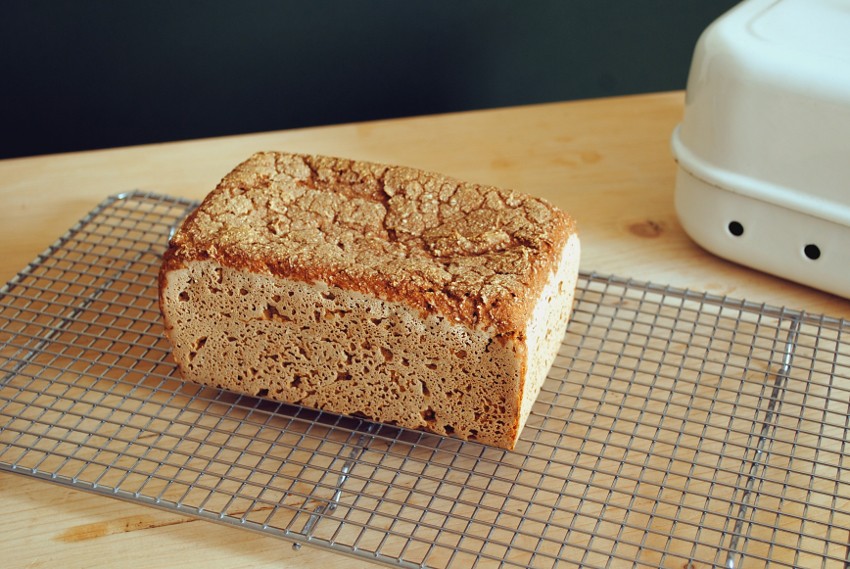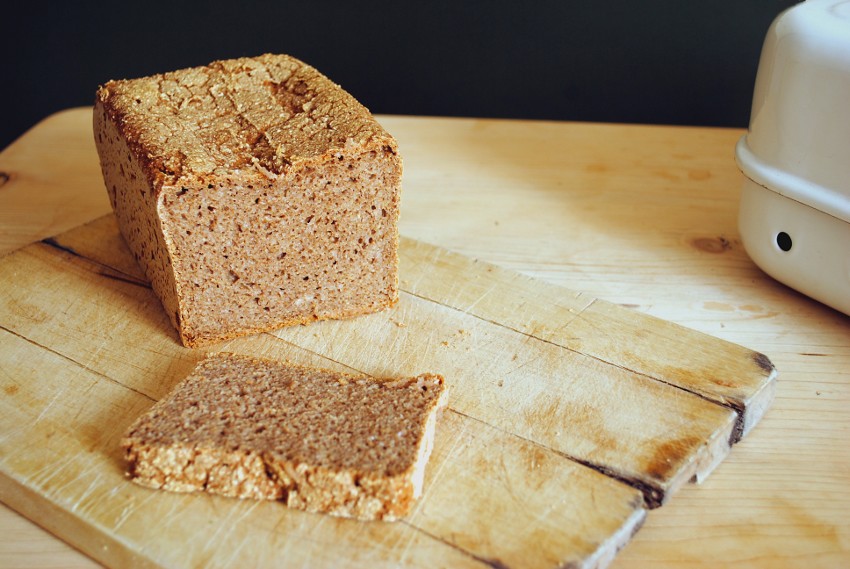All rye now
If you have a healthy rye starter, making a 100% rye loaf is easy. This is what is called ‘black bread’ throughout central and eastern Europe, although it isn’t actually black. There is no kneading involved – the point of kneading dough is to develop gluten, but the gluten in rye dough is too weak to lend much to the structure of the bread. You don’t even need to shape the loaf – the dough is very soft and is simply scooped into a tin to rise.
Using Andrew Whitley’s recipe, the first stage is to build up the starter using a sponge. This is just a mixture of starter and some additional flour and water that is allowed to ferment overnight before the remaining flour and water is added to make the final dough.
50g starter
150g rye
300g water
Mix together and leave overnight, or for around 12 hours, in a warm spot. After this time the sponge should be quite frothy. Now you’re ready to mix the dough.
440g sponge
330g rye
200g water
5g salt
Throw it all together and mix thoroughly. You will end up not with a dough as such, but a thick paste. Scoop the paste into a 2lb loaf tin, well greased unless it’s non-stick, pressing it into the corners. Smooth the surface with the back of a spatula or spoon just to get it approximately even. All the hard work is now done.
Rye bread only needs a single rise, although as it is a sourdough this can take quite a long time depending upon the temperature and the strength of the starter. I usually find it takes 3-4 hours at around 25°c, but progress will obviously be slower at cooler temperatures. The dough will not rise as dramatically as that made with wheat flour, but it will rise and take on a puffy appearance. The rule of thumb for dough made with wheat flour is that it should double in size; with rye, you should see it expand by about half its original size. To keep the surface of the dough from drying out, put the tin inside a plastic shopping bag.
Because rye dough contains so much water, it takes longer to bake than many other breads. Since my oven isn’t employee of the month in the temperature department, I’m lucky if I can muster 220 °c. I give the dough about an hour and ten minutes to bake properly. If your oven can reach the dizzy heights of 230-250°c, give the dough 15-20 minutes at that temperature and then drop down to 210-220 °c for 30-40 minutes. It’s better to err on the side of over-baking rather than under-baking, a principle that holds good for most breads.
Because the gluten in rye flour is weak, rye loaves do not have the domed crusts of wheat breads, and have a denser, slightly sticky crumb. It’s conventional to leave a freshly baked loaf for at least a day before eating, although you won’t suffer any ill effects if you abandon tradition. As with any bread, eating it when still warm from the oven will not reveal its better qualities.
The strong, tangy flavour of rye bread gets stronger with keeping, and it will keep for much longer than normal bread. I’ve kept rye for a couple of weeks in a breadbin without mould or staling being a problem. Unlike most other breads, it will also keep well in the fridge, wrapped in clingfilm.
Black bread is usually sliced quite thinly, on account of its greater density, and is often used to make open sandwiches with toppings such as cured fish or meats, pickled vegetables like beetroot and cucumber, or cheese. In Scandinavia they are known as smørrebrød, and there is a virtually infinite variety of toppings. The American Vogue model and WW2 photojournalist Lee Miller, who turned to cooking later in life, was once awarded first, second and third places in a Norwegian smørrebrød competition that was judged by blind-tasting – quite an achievement!



